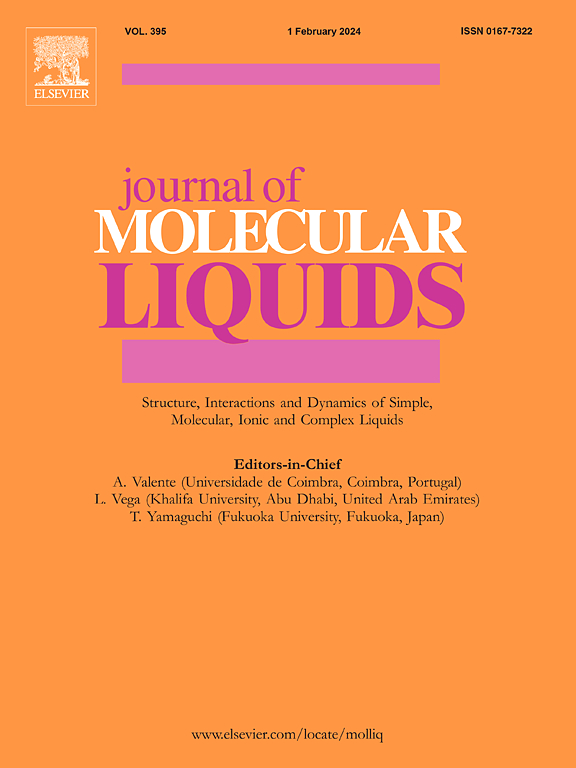A novel alpha-terpineol-loaded niosome formulation coated with hyaluronic acid and evaluation of its anticancer properties in vitro
IF 5.3
2区 化学
Q2 CHEMISTRY, PHYSICAL
引用次数: 0
Abstract
Alpha-terpineol (α-T) has been demonstrated to possess anti-cancer properties, however, its high hydrophobicity limits its direct application. This study aimed to prepare niosomes (N) coated with hyaluronic acid (HA) containing alpha-terpineol (α-TN-HA) and evaluate their inhibitory activity against cancer cells. Dynamic light scattering (DLS), field emission scanning electron microscopy (FESEM), and Fourier-transform infrared spectroscopy (FTIR) were used to characterize the hyaluronic acid coated α-TN noisome (α-TN-HA). UV spectroscopy was employed to assess the encapsulation efficiency (EE). α-TN-HAs were studied using several methods, including MTT and AO/PI as well as flow cytometry and real-time quantitative PCR (RT-qPCR). According to the results, α-TN-HA exhibited a spherical morphology with a size of 279.3 nm, a PDI of 0.30, a charge of −38.6 mV, and an EE of 89.05 %. α-TN-HA exhibited higher cytotoxic effects on cancer cells than normal HFF cells as determined by the cytotoxicity assay. Apoptosis induction was demonstrated in treated cells by the arrest of the SubG1 phase, the increase in apoptotic cells, and increased expression of BAX, P21, and P53 genes. These results suggest that nanoparticles synthesized in this study could be useful for treating cancer.
求助全文
约1分钟内获得全文
求助全文
来源期刊

Journal of Molecular Liquids
化学-物理:原子、分子和化学物理
CiteScore
10.30
自引率
16.70%
发文量
2597
审稿时长
78 days
期刊介绍:
The journal includes papers in the following areas:
– Simple organic liquids and mixtures
– Ionic liquids
– Surfactant solutions (including micelles and vesicles) and liquid interfaces
– Colloidal solutions and nanoparticles
– Thermotropic and lyotropic liquid crystals
– Ferrofluids
– Water, aqueous solutions and other hydrogen-bonded liquids
– Lubricants, polymer solutions and melts
– Molten metals and salts
– Phase transitions and critical phenomena in liquids and confined fluids
– Self assembly in complex liquids.– Biomolecules in solution
The emphasis is on the molecular (or microscopic) understanding of particular liquids or liquid systems, especially concerning structure, dynamics and intermolecular forces. The experimental techniques used may include:
– Conventional spectroscopy (mid-IR and far-IR, Raman, NMR, etc.)
– Non-linear optics and time resolved spectroscopy (psec, fsec, asec, ISRS, etc.)
– Light scattering (Rayleigh, Brillouin, PCS, etc.)
– Dielectric relaxation
– X-ray and neutron scattering and diffraction.
Experimental studies, computer simulations (MD or MC) and analytical theory will be considered for publication; papers just reporting experimental results that do not contribute to the understanding of the fundamentals of molecular and ionic liquids will not be accepted. Only papers of a non-routine nature and advancing the field will be considered for publication.
 求助内容:
求助内容: 应助结果提醒方式:
应助结果提醒方式:


